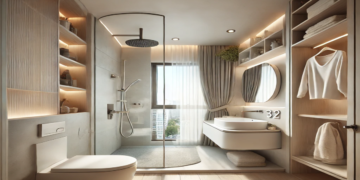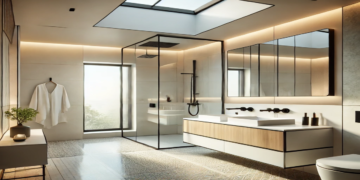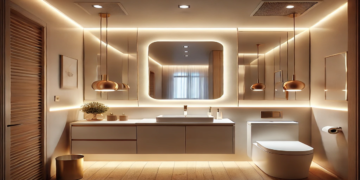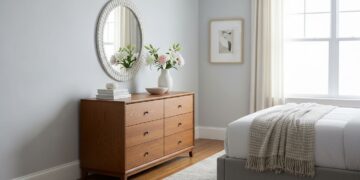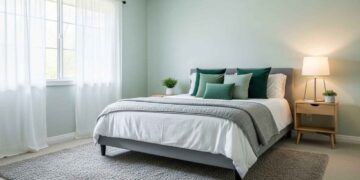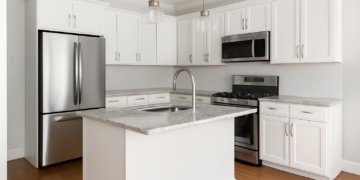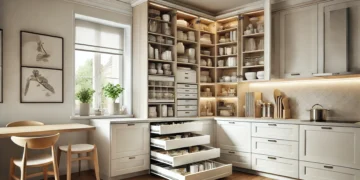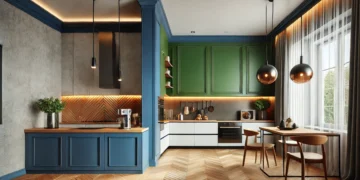Rugs are really important in decorating a home. They bring in warmth, comfort, and style to any room. However, the choice of the right rug size can be problematic. This guide will unravel the subject of different rug sizes and guide readers in the right direction when they decide to buy a rug for their space.
Understanding Common Rug Sizes
Different rug sizes are available according to the room size and what the room is used for. The most common rug sizes vary from a small entry rug to a huge area rug. Here is a list of the typical carpet sizes.
- 2′ x 3′: Small accent rug
- 3′ x 5′: Small area rug
- 4′ x 6′: Medium area rug
- 5′ x 8′: Large area rug
- 8′ x 10′: Extra-large area rug
- 9′ x 12′: Room-sized rug
Choosing the Right Rug Size for Different Rooms
Living Room Carpet Size
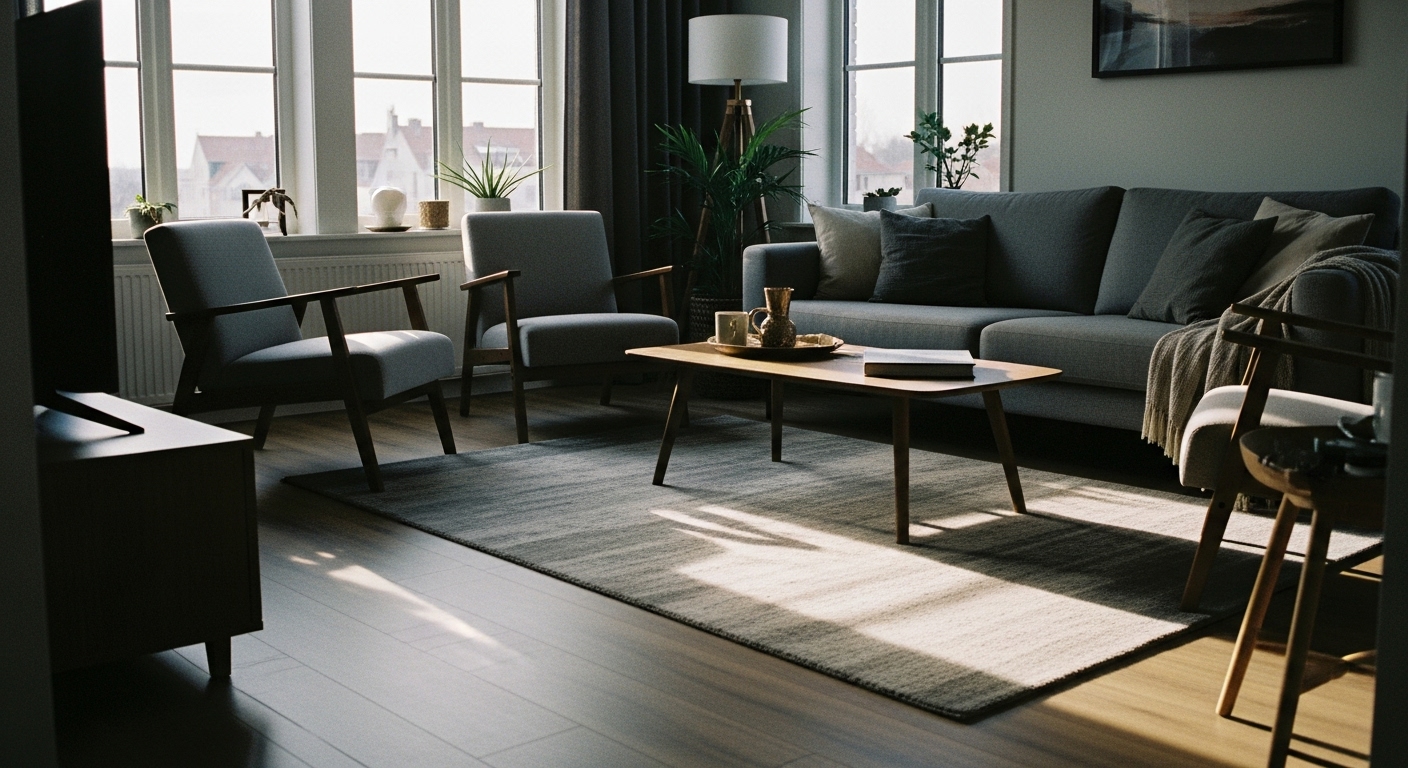 The living room is frequently a house’s major hub. In the assortment of a living room mat, the size is a considerable factor. Common rug sizes for living rooms include:
The living room is frequently a house’s major hub. In the assortment of a living room mat, the size is a considerable factor. Common rug sizes for living rooms include:
- 5′ x 8′
- 8′ x 10′
- 9′ x 12′
These dimensions can be used in different ways in which the furniture is set up. The rug should be big enough to go under the front legs of sofas and chairs. For wide-ranging interior design values that govern finest furniture agreement, you can refer to resources like the American Society of Interior Designers (ASID).
To help you arrange your space, consider our guides on how to optimize your living room layout and maximize your small living room space.
Dining Room Area Rug Size
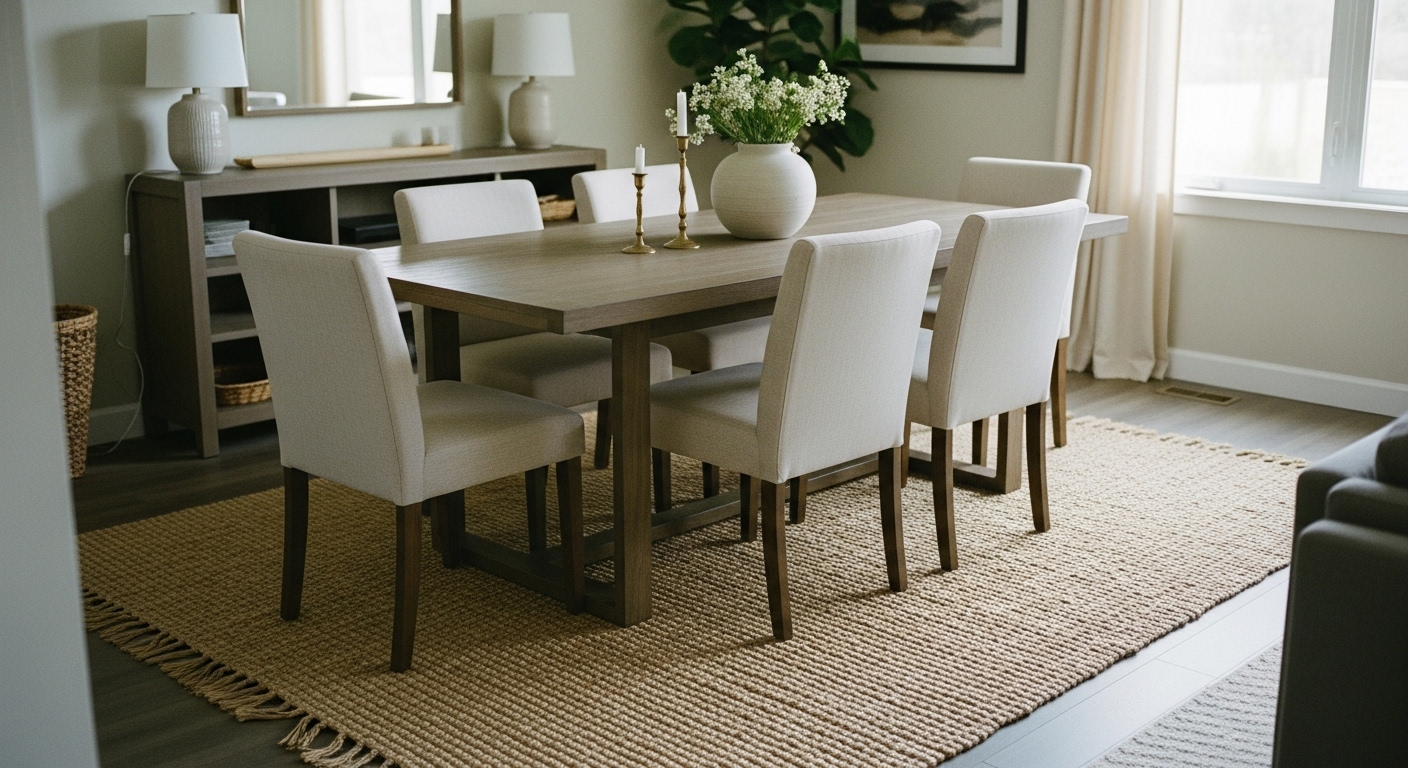 The rug must be long enough to envelop the table as well as chairs in the dining room. Regular area mat sizes for dining place to stay are:
The rug must be long enough to envelop the table as well as chairs in the dining room. Regular area mat sizes for dining place to stay are:
- 6′ x 9′
- 8′ x 10′
- 9′ x 12′
The cycling should be done in a minimum of 24 inches length to the right and the left side of the table. This is for the chairs to be pulled out without hurting the rug’s edge. For more inspiration, discover our small dining room decorating ideas that perfectly complement various rug sizes.
Bedroom Rug Sizes
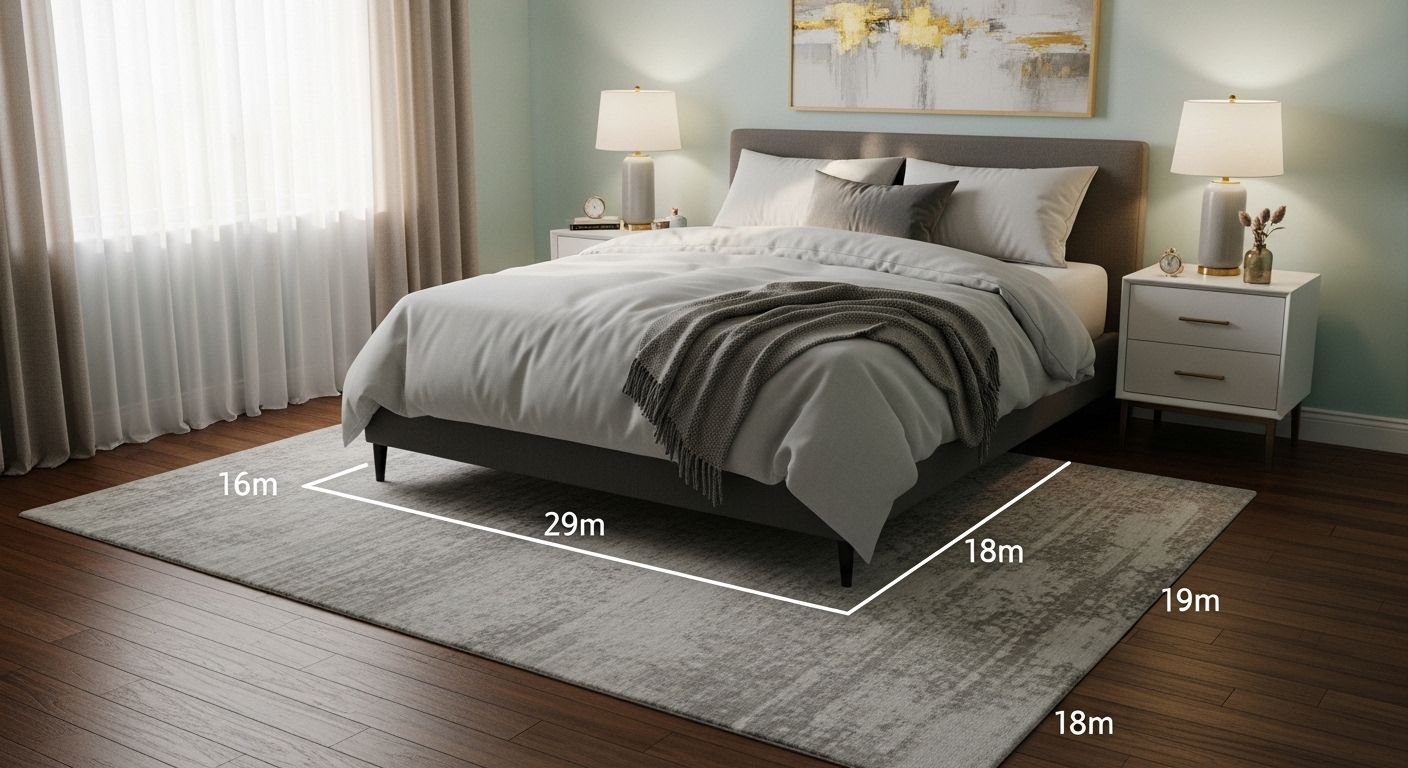 Rugs in bedrooms provide comfort and style. The majority common area mat sizes for bedrooms are:
Rugs in bedrooms provide comfort and style. The majority common area mat sizes for bedrooms are:
- 5′ x 8′
- 8′ x 10′
- 9′ x 12′
The short carpet should go out 18 to 24 inches beyond the sides of the bed. This enhances the person’s safe landing when descending from the bed. For comprehensive inspiration, explore various small bedroom design ideas, creative teen bedroom decor ideas, or specific bedroom ideas for women to match your rug choice.
How to Select Rug Size
The right rug size is the result of some factors being considered:
- Take the measurements of the room
- Plan which furniture will be placed
- Ponder over the room’s function
- Stand back a bit from the rug when positioned against the wall
- These steps can assist to decide the perfect size mat for each room.
Normal Rug Sizes for Different Room Types
Entryway
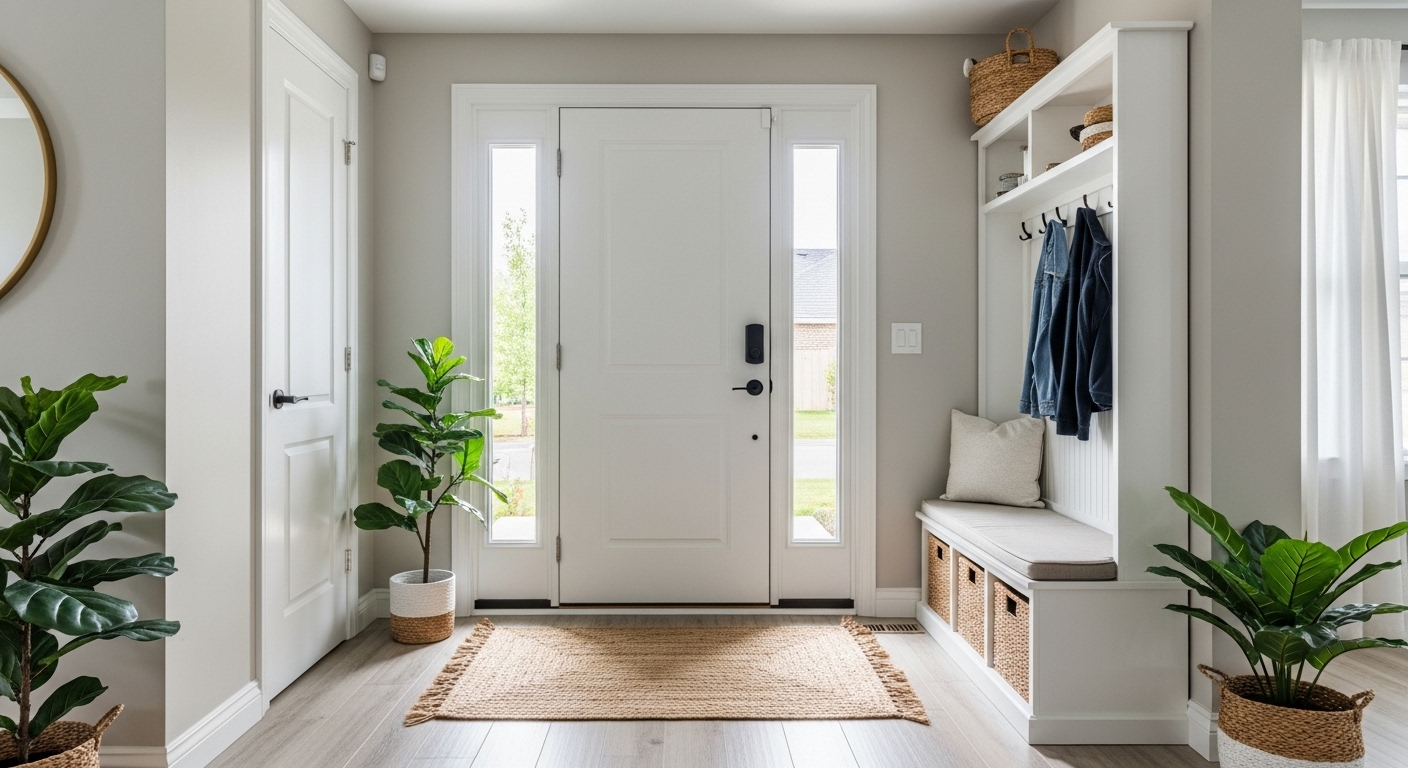 Entryway rugs could be a bit smaller. Standard rug sizes for the entries are:
Entryway rugs could be a bit smaller. Standard rug sizes for the entries are:
- 2′ x 3′
- 3′ x 5′
- 4′ x 6′
Enhance your entryway’s appeal further with foyer decorating ideas and by exploring trendy entryway color combinations.
Kitchen
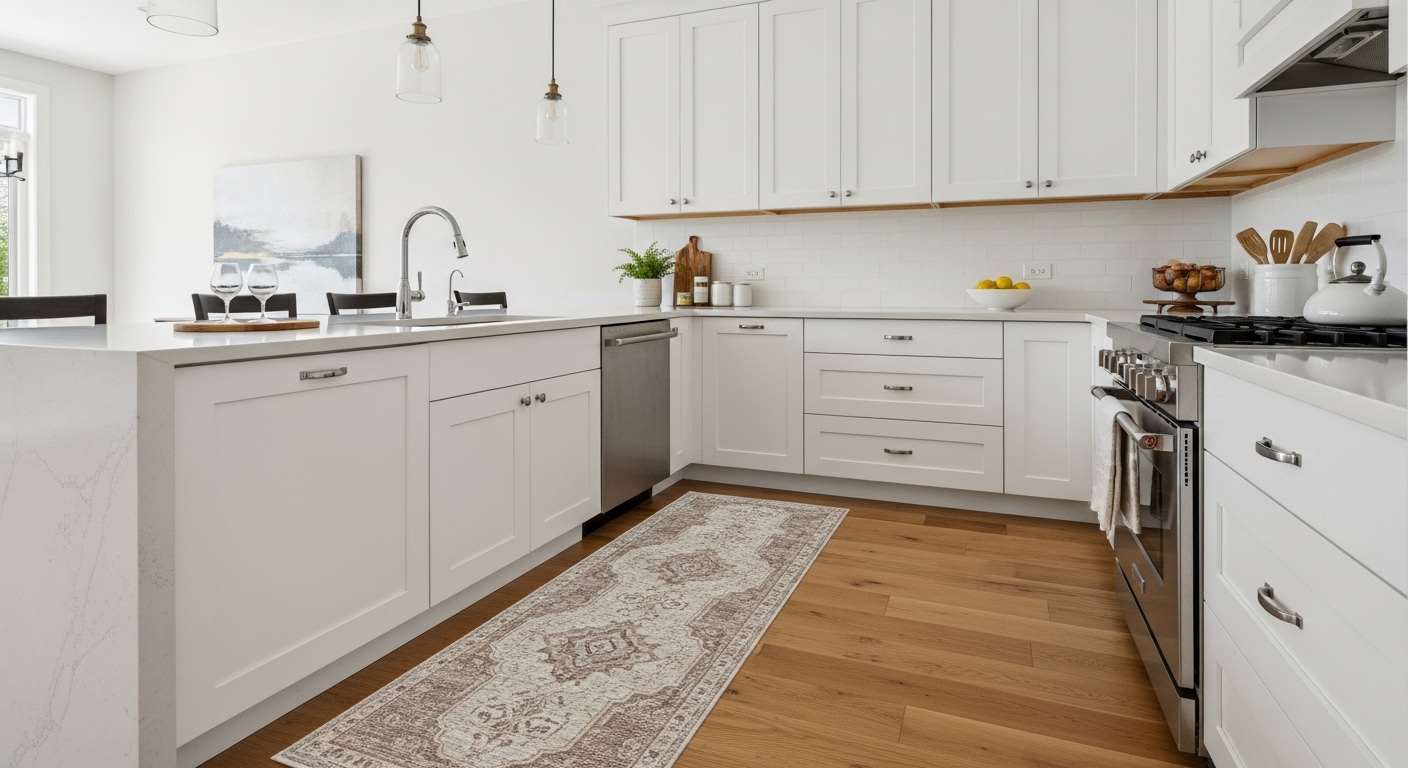 Typically, kitchen rugs are smaller and narrower. Common rug sizes for kitchens include:
Typically, kitchen rugs are smaller and narrower. Common rug sizes for kitchens include:
- 2′ x 3′
- 3′ x 5′
- 2.5′ x 8′ (runner)
These rugs are perfect accents to complement your small kitchen remodel ideas, or to go alongside kitchen counter decor and decorating ideas for above kitchen cabinets.
Hallway
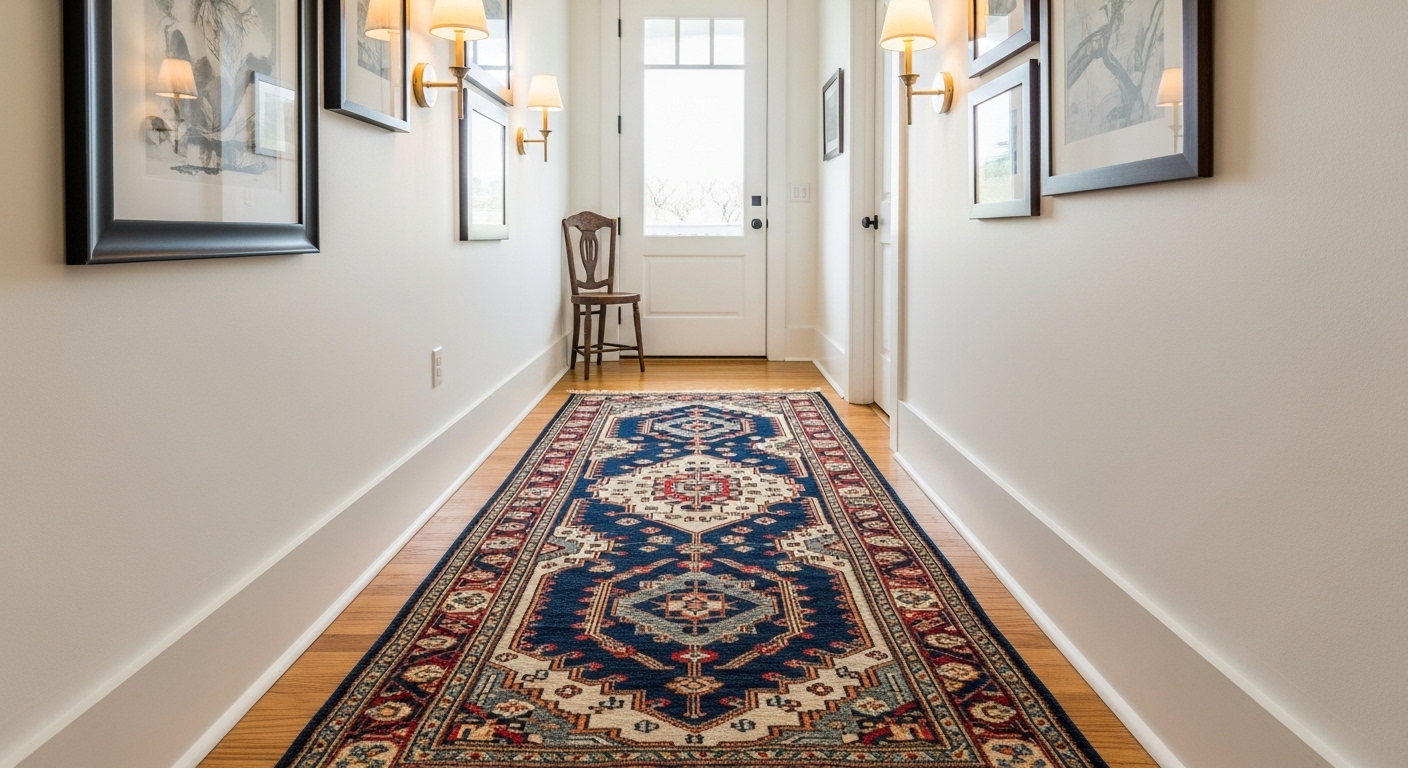 Hallway rugs are regularly long as well as thinner than the others. The rug measures in standard for the hall are:
Hallway rugs are regularly long as well as thinner than the others. The rug measures in standard for the hall are:
- 2′ x 6′
- 2.5′ x 8′
- 3′ x 10′
Factors Affecting the Rug Size Selection
Room Size
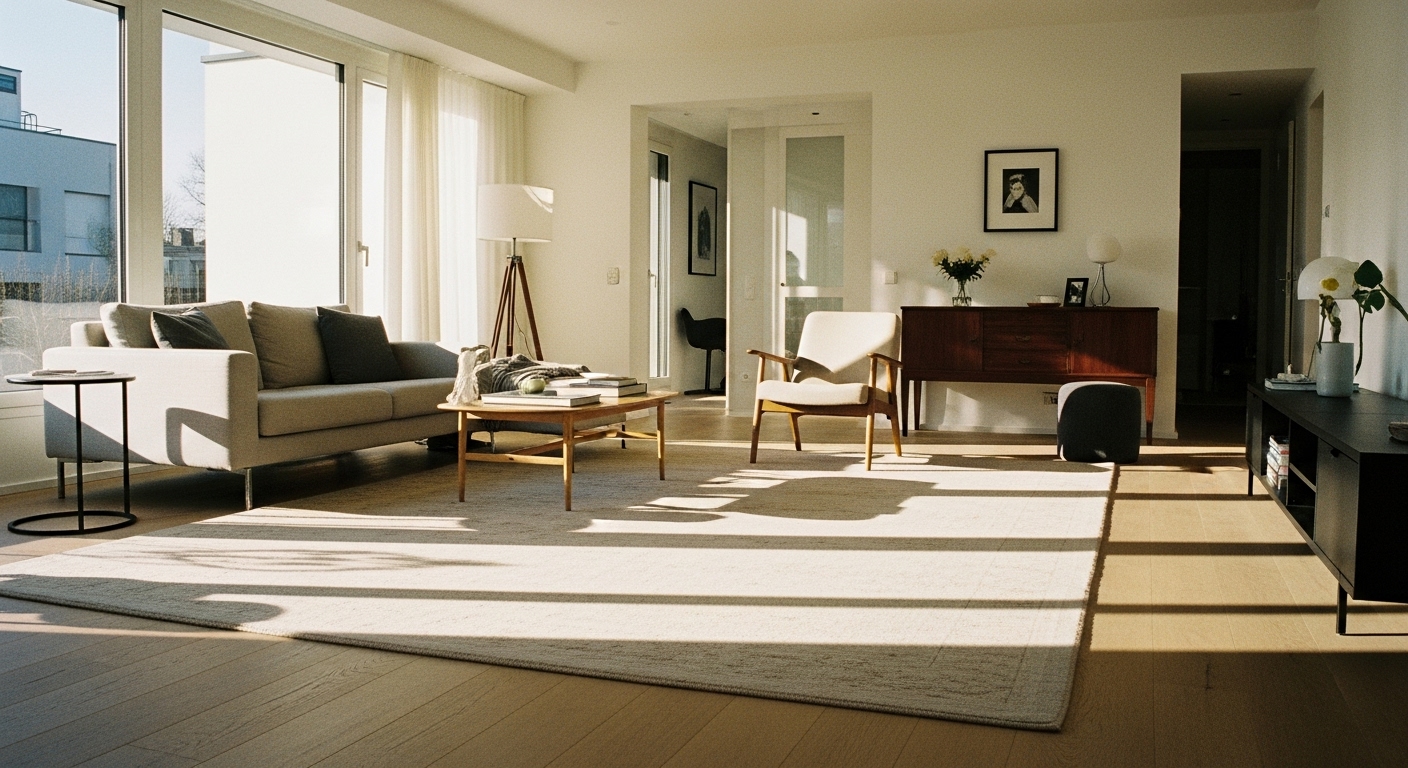 The room’s size is a major contributor to the decision of a rug size. Larger rooms need bigger rugs. Smaller rooms get the best when the rug is small.
The room’s size is a major contributor to the decision of a rug size. Larger rooms need bigger rugs. Smaller rooms get the best when the rug is small.
Furniture Layout
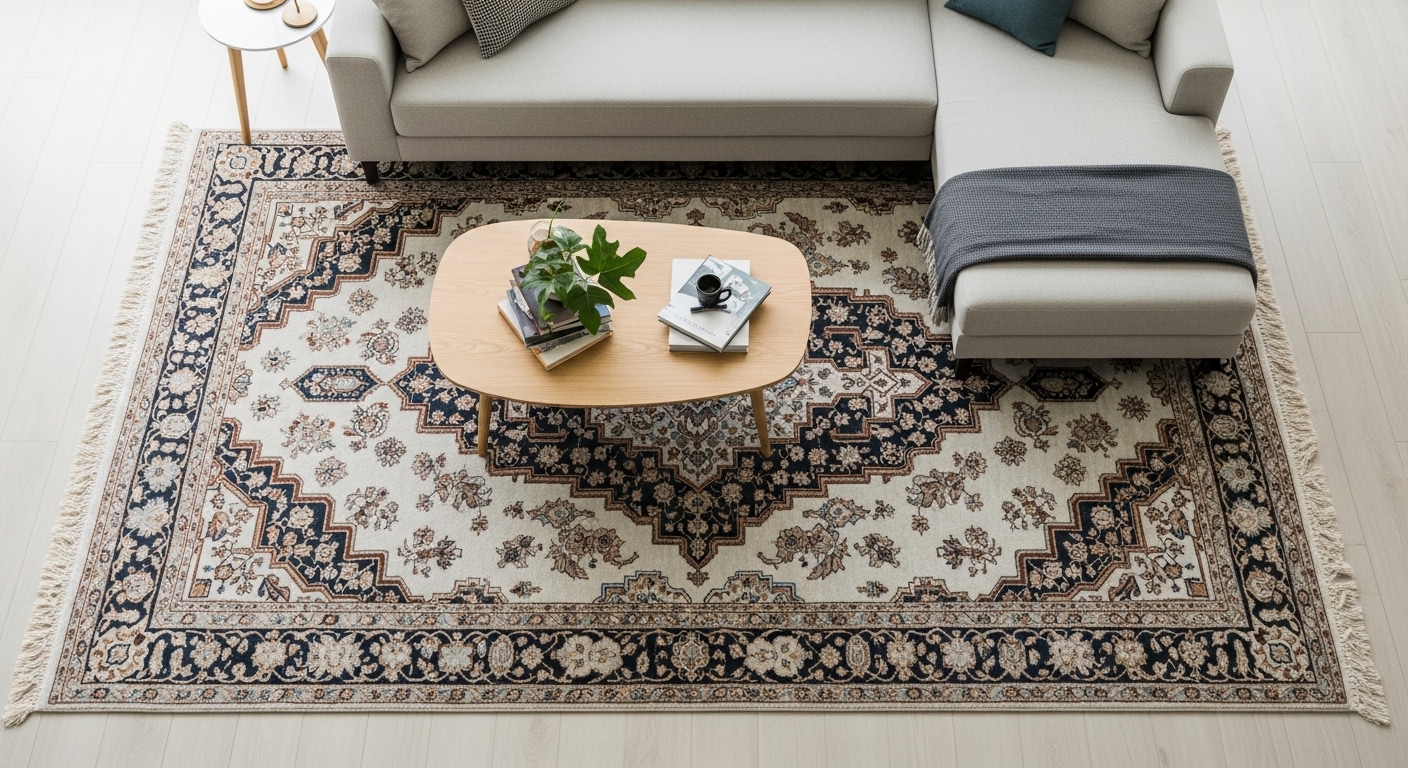 How the furniture is set up affects the size of the rug. The rug should complement the furniture layout. It should not take over the space or suddenly become nonexistent. For more in-depth advice on furniture arrangement, trusted interior design publications like Apartment Therapy often provide excellent guidelines.
How the furniture is set up affects the size of the rug. The rug should complement the furniture layout. It should not take over the space or suddenly become nonexistent. For more in-depth advice on furniture arrangement, trusted interior design publications like Apartment Therapy often provide excellent guidelines.
Purpose of the Room
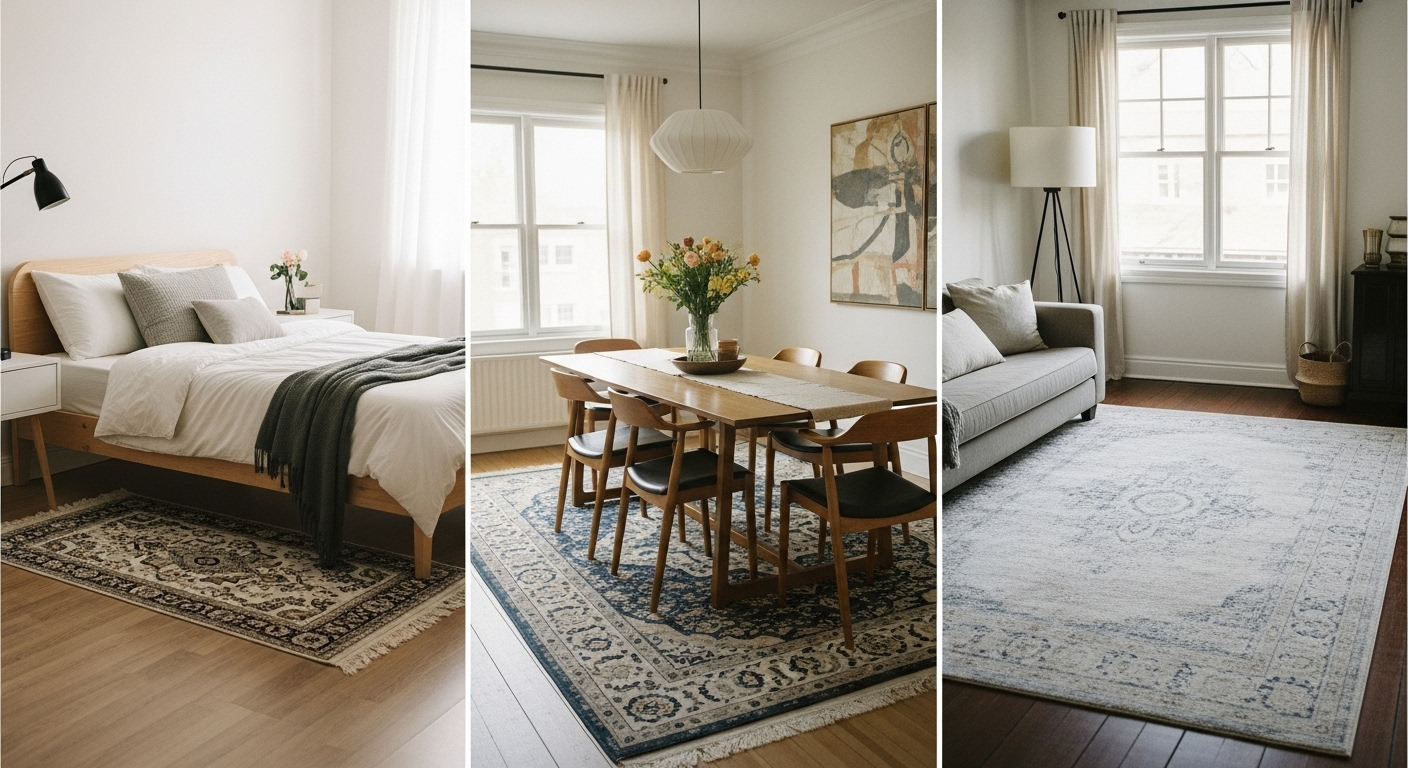 Space utilization will determine the right size of the rug. Generally, larger dining areas would need larger rugs than bedrooms. A living room would typically require the largest rug.
Space utilization will determine the right size of the rug. Generally, larger dining areas would need larger rugs than bedrooms. A living room would typically require the largest rug.
Personal Preference
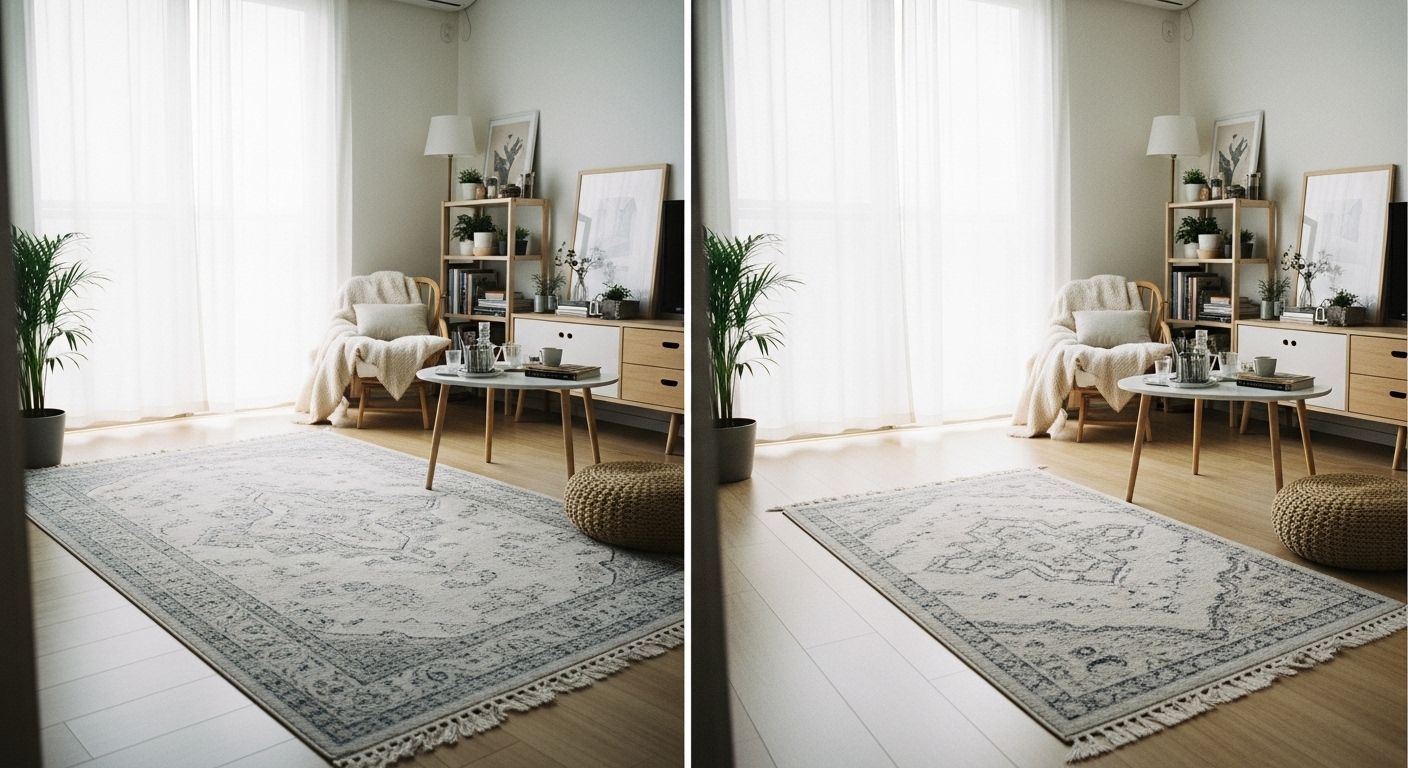 The choice of the size of a rug is affected by personal taste as well. Some communities love to have a big rug that nearly covers the complete floor. Others like to have a small rug that reveals most of the floor.
The choice of the size of a rug is affected by personal taste as well. Some communities love to have a big rug that nearly covers the complete floor. Others like to have a small rug that reveals most of the floor.
Common Mistakes When Choosing Rug Sizes
Avoid these mistakes when you buy a new rug:
- Purchasing a rug that is too small for your room.
- Getting a rug that is too large.
- Neglecting the furniture’s position in the room’s center.
- Disregarding the room size.
- Leaving out the room’s purpose.
Tips for Measuring for a New Rug
Use the following steps to find the right rug size:
- Get room dimensions using a tape measure.
- Use painter’s tape to mark the rug’s area.
- The dimension of where the strip is located is then taken.
- Look for a standard rug that is just about the same size as the dimensions that you have made.
How Different Rug Sizes Affect Room Visuals
Rug dimension acts as a visible feature of the place:
- Big rugs create a feeling as if the rooms were bent out and merged.
- Zones are defined well, with the smaller ones in the big room.
- Moderate-sized carpets establish equilibrium in the space.
The Impact of Rug Texture and Pattern on Size Perception
Rugs’ material and pattern have a huge effect on the perception of their size. Here we have given some points to think about:
- Textured rugs which have larger designs can additionally help in lead to another common design effect, such as the feeling of a smaller room whenthe large pattern is used.
- Your pads may alternate with flowers or little prints that can give a corrective effect to the room.
- Really fluffy flat, and hand tufted rugs made of wool cannot simply deconstruct the traditional and old-fashioned traditions of the classical interiors, but can lead to another design concept like comfortable and homey interiors.
- Three-dimensional flooring materials and textures provide an illusion of space, as flat floor models do. For more on textile standards and innovations in rug materials, the International Textile Manufacturers Federation (ITMF) offers valuable industry insights.
When considering patterns and colors for your rugs, you might also find inspiration in our article on bold colors for home decor.
Seasonal Considerations for Rug Sizes
Rug sizes may also be taken into account when you are choosing. The season can help you decide which sizes to go for:
- There is an added benefit of the optical illusion of visual spread of the room to the expected lesser eye space, as with strongly colored bedspreads.
- For summer, sit in the sunlit space and move the sofa or bed to the table to bring the shades of summer.
- For those who live in a place that can still be cold even in spring, these examples may seem eulogies. Think about how your rug choices can complement your cozy Thanksgiving tablescape ideas, contribute to a festive atmosphere in compact living spaces, or even tie into your outdoor Christmas decorating plans.
Common Rug Sizes for Outdoor Spaces
Outdoor rugs are in demand. Below are some regular rug sizes for outdoor areas:
- A 5′ x 7′ rug fits small patios and balconies perfectly.
- For medium-sized decks, an 8′ x 10′ rug is more pleasant.
- If you have a very large outdoor living area, then go for a 9′ x 12′ rug, as this will give you the best feel for the space. When selecting outdoor rugs, consider how they integrate with your overall exterior home design ideas or even specific styles like modern farmhouse exterior ideas.
How to Adjust Standard Rug Measurements for Unique Spaces
Not all rooms are the same, which is no more a matter of concern. Here’s how you can work around common rug sizes for unique rooms:
- Buy a few smaller rugs to stitch up the rest of the floor space.
- Reflect on the rug that you seek to utilize as part of the ideal solution and place it on the bottom of the floor below the table while you sit down.
- Place the rectangle-shaped rug like a square in the corners of the room to make it look different from the rest of the room. These strategies are particularly useful when decorating small spaces where every inch counts.
The Role of Rug Size in Interior Design Styles
When you talk to the designers about it, they would probably tell you that different interior styles either allow that one can join elements of a rug with a different zone, or one rug allows that different rooms are connected:
- Throughout a minimalist interior, little patterns are used. The focus is on minimalism, and so, the sort of choice would be quickly made.
- Maximalist: Lots of different materials are used in every room, but natural materials are used in most rooms.
- Traditional: Big room rugs that take up most of the floor area are often preferred here.
- Modern: They may use unusual rug shapes and sizes sometimes. For further reports and analysis on current and future interior design trends, consider consulting resources like the ASID Trends Outlook Report. Understanding these nuances can help you choose rugs that align perfectly with 2025 interior design trends or how to effectively mix modern and vintage decor in your space.
Conclusion
It is important to know about the standard rug sizes, which can be helpful in terms of balance and beauty of the whole house. The size of rugs for living rooms, dining rooms, and the like may vary, and each room has its specific needs. By keeping in mind the room’s dimensions, furniture layout, and our style, we can select the right rug size. Trying to avoid repeating all the time will mathematically create a well-balanced effect, and it may enhance the overall feeling of the room.
FAQs
What size rug is best for a dining room?
The perfect rug for a dining room would have a 24-inch overhang around it from the table. Among the typical sizes are 8′ x 10′ or 9′ x 12′.
How do I measure for a bedroom rug?
First, measure the bed and then add 2-3 feet on each side. A 5′ x 8′ rug can be used for a twin or full-sized bed, while a queen or king may require an 8′ x 10′ or any other larger one.
What are typical area rug sizes for a small living room?
The area rugs that are perfect for small living rooms are 5′ x 8′ and 6′ x 9′. These sizes can show clearly where the seating is without overtaking the room in the process.
How much of the floor should a rug cover?
As per the norm, a rug should take up around 50-75% of the floor space in a room. This creates a look that is not cluttered, yet it is not entirely open either.
What size runner rug is best for a hallway?
The hallway runner can be between 2′ and 3′ in width, and its length can be anywhere from 6′ to 14′, depending on how long your hallway is. Keep about 4-5 inches of floor border around all the sides.
How do I choose a rug size for an open floor plan?
In an open floor plan, use rugs to separate areas. Choose rugs of the correct sizes that allow all the furniture to be placed in each area, like an 8′ x 10′ one for the living room and a 6′ x 9′ one for the dining table.
Use our complete guide to find the right size rug for every room! Whether you’re decorating a comfortable bedroom, an open living room, or a dining room, we can help make it a little less confusing. Click now to get expert tips and images that make finding the right rug size easy and simple.



